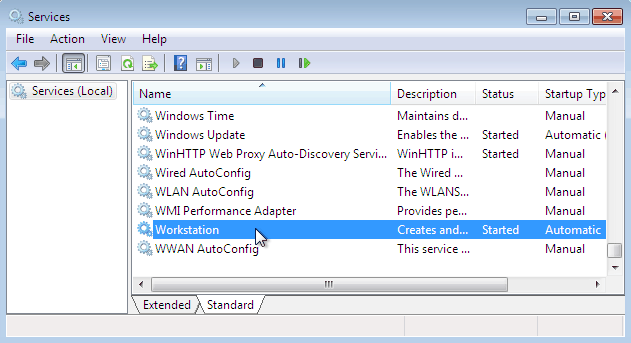The Workstation Service in Microsoft Windows Operating Systems, also known by the service name ‘lanmanworkstation’, is a system service that manages network connections and access to network resources. It is responsible for creating and maintaining client network connections to remote servers using the SMB (Server Message Block) protocol, commonly used for file, printer, and named pipe sharing over a network.
In Windows 10 and Windows 11, the Workstation Service is still very much in use. It operates in the background and is essential for Windows’ ability to interact with network shares and resources. Without this service running, the system would be unable to connect to or utilize resources over a network.
What is Workstation Service (Windows OS)?
Workstation Service, also known as LanmanWorkstation, is a component of the Microsoft Windows Server operating systems that allows a client to request file and print resources from servers over the network.
How does Workstation Service work?
The Workstation service is a user mode service that works together with a kernel mode component called the redirector file system driver, or rdr.sys. This redirector is implemented as a standard file system driver and resides above the Transport Driver Interface (TDI) layer, which allows it to interact independently with any transport protocols.

The Workstation service on a client computer accepts an input/output (I/O) request for a remote file, named pipe, or mailslot; determines which service can best provide this resource; and redirects the request to the Server service on the server where the requested resource resides. The Server service provides the requested resource and routes it back to the client that requested it. The Server service also consists of two components, a user mode component called LanmanServer and a kernel mode component called the server file system driver, or srv.sys.
You can also install additional redirectors from third-party vendors that can coexist with the Workstation service on Windows NT and Windows 2000. An example of an additional redirector included with Windows NT and Windows 2000 is Gateway Service for NetWare (GSNW), which enables Microsoft Windows clients to gain access to files and printers on a Novell NetWare server.
See also
- Server service
- Microsoft-Windows-WorkstationService, by Microsoft Learn